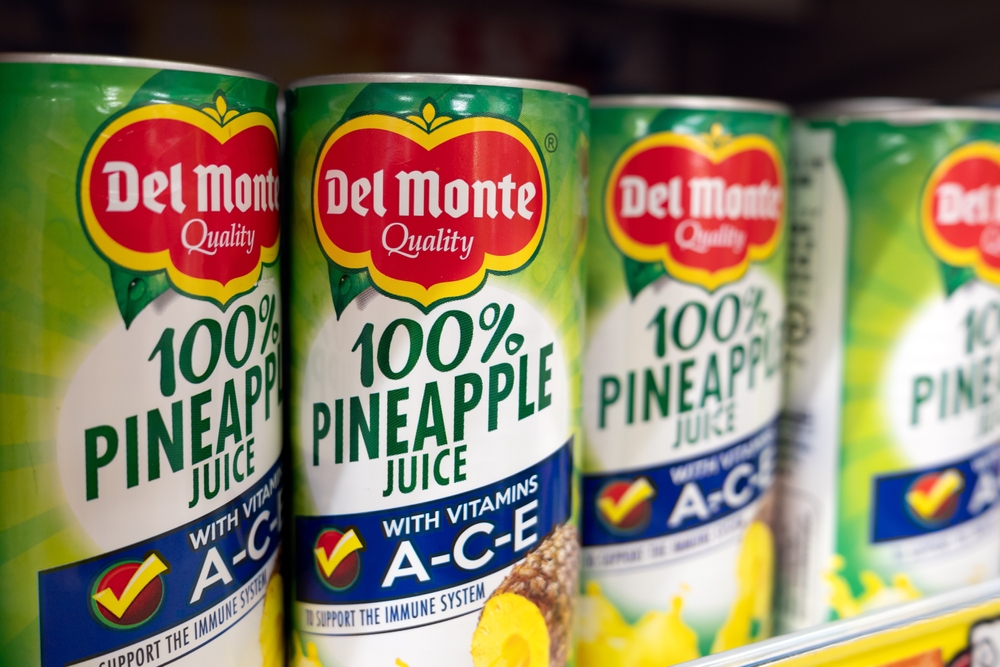Del Monte Foods shocked the American food industry by voluntarily filing for Chapter 11 bankruptcy protection late Tuesday, marking a dramatic fall for the 138-year-old company that has been a kitchen staple since 1886. The iconic brand, best known for its canned fruits and vegetables, announced it would pursue a comprehensive sale process for all assets while continuing operations during the peak canning season under court supervision.
President and Chief Executive Officer Greg Longstreet characterized the bankruptcy filing as the most effective strategy to accelerate the company’s turnaround efforts and create a stronger, more sustainable business model. The decision follows extensive evaluation of alternative options that ultimately led management to conclude that court-supervised restructuring offered the best path forward for preserving the Del Monte legacy while addressing financial challenges.
The company secured $912.5 million in new funding that includes $165 million in fresh capital from existing lenders, providing sufficient liquidity to maintain normal operations throughout the sale process. This financing arrangement ensures that Del Monte can continue serving customers and fulfilling contracts while potential buyers evaluate acquisition opportunities for the storied food manufacturer.
Massive liabilities reveal depth of financial crisis
Court documents filed in the United States Bankruptcy Court for the District of New Jersey reveal that Del Monte Foods faces liabilities estimated between $1 billion and $10 billion, highlighting the massive scale of financial obligations that drove the company toward bankruptcy protection. These staggering debt levels reflect years of mounting pressure from changing consumer behaviors, increased competition, and challenging market dynamics that have eroded profitability.
The company’s extensive product portfolio includes well-recognized brands such as College Inn broths and Contadina canned tomatoes alongside its flagship Del Monte label, representing significant brand equity that potential buyers may find attractive despite current financial difficulties. The restructuring support agreement contemplates maintaining these valuable intellectual property assets while transferring ownership to new management capable of revitalizing operations.
Del Monte’s bankruptcy filing concludes a particularly challenging year that included controversial debt restructuring maneuvers and legal disputes with lenders over asset transfers. The company’s parent organization, Del Monte Pacific Ltd., previously elected to skip payments to certain lenders as part of lawsuit settlements related to complex financial restructuring transactions that left some creditors in disadvantageous positions.
Consumer preference shifts undermine traditional canned food business
Industry analysts attribute Del Monte’s financial difficulties to fundamental changes in consumer spending patterns and preferences that have reduced demand for traditional canned food products. Sarah Foss, Global Head of Legal and Restructuring at Debtwire, notes that consumer demand decline has forced the company to incur increased costs related to surplus inventory requiring expensive warehouse storage and promotional spending to clear shelves.
The broader shift toward healthier food alternatives has particularly impacted companies like Del Monte that built their business models around preservative-laden canned products now viewed less favorably by health-conscious consumers. Additionally, growing consumer preference for private label products has intensified competitive pressure on established national brands that historically commanded premium pricing.
These market dynamics have created what Longstreet described as challenges intensified by difficult macroeconomic conditions, forcing consumers to reduce overall spending while prioritizing value-oriented purchasing decisions. The combination of reduced demand and increased promotional costs has significantly compressed profit margins across Del Monte’s product lines.
Storied legacy faces uncertain future amid restructuring efforts
Del Monte’s remarkable history began in 1886, with the company establishing its famous San Francisco cannery in 1907 that grew to become what the company claimed was the world’s largest fruit and vegetable cannery by 1909. This impressive industrial heritage represents more than a century of American food production innovation that potential buyers may value despite current operational challenges.
The bankruptcy filing represents the culmination of previous restructuring efforts, including controversial drop-down transactions that allowed Del Monte to raise fresh liquidity by borrowing against transferred assets while creating different payment priorities among lenders. These complex financial maneuvers became the subject of litigation from excluded lenders who alleged the company defaulted on a $725 million financing agreement.
With enhanced financial positioning and new ownership, company leadership expresses confidence that Del Monte will emerge better positioned for long-term success in evolving food markets. The sale process will determine whether the storied brand can adapt to contemporary consumer preferences while preserving its legacy as an American food industry icon.












